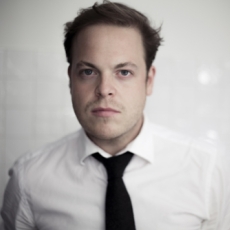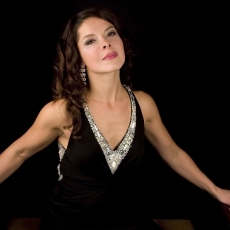Robin Ticciati & SRSO - Berlioz: Romeo et Juliette - Audiophile Audition
Berlioz's hybrid masterwork, dubbed by the composer a symphonie dramatique, could be considered an advance on Beethoven's Choral Symphony. Like Beethoven's final symphony, it includes among its forces vocal soloists, chorus, and orchestra. But whereas Beethoven's work is a symphony with an uncommon choral finale (and some boneheaded commentators still take the composer to task for daring to tinker with the basic tenets of symphonic construction), Berlioz's conception is more radical, incorporating as it does set pieces that could only be considered orchestral tone poems (before the fact) along with lengthy narrative-dramatic sections delivered by the soloists and orchestra. Perhaps the only genuinely symphonic movement in a classical sense is the Queen Mab Scherzo, which is, given that this is Berlioz and not Beethoven, a highly Quixotic version of the musical form that Beethoven made a fixture of the symphony as we know it.
Understandably, at its debut the work divided critical reaction, though unlike much of Berlioz, it established itself early as a staple of the repertory and has never be sidelined since then. Roméo et Juliette may not be quite as earthshaking as Beethoven's Ninth, but in many ways it is just as revolutionary, stretching orchestral technique almost to the breaking point and offering a model that successfully balanced vocal lines against the increasingly burgeoning forces of the nineteenth-century symphony orchestra. Wagner was listening and applied the lessons he'd learned; in fact, some commentators see a direct link between Roméo and Tristan und Isolde.
The genesis of Berlioz's 1839 work goes back to 1827, when the composer attended a performance of Shakespeare's play at the Odéon Theatre in Paris. He experienced the work in what modern folks of any learning would consider a bowdlerized version, but the effect was nonetheless electrifying. It had the side effect of introducing Berlioz to his future wife, the Irish actress Harriet Smithson (who played Juliet), the catalyst for the Symphonie fantastique.
Like the version of Romeo and Juliet that Berlioz saw performed in Paris, the libretto of Roméo et Juliette is not drawn directly from Shakespeare. The version crafted by Émile Deschamps includes some departures from the original, including an expansion of the scene involving the reconciliation of the Montagues and Capulets following the death of the lovers. Since Berlioz's work is not a music drama but a dramatic symphony, much of the vocal writing concentrates on narration rather than outright drama, hence the large role that the chorus plays.
Robin Ticciati is a rising star among English musical figures. And he's also establishing himself as a Berlioz specialist, maybe in the manner of the late Sir Colin Davis? That remains to be seen, yet Ticciati's Sinfonie fantastique, also on the Linn label, was almost universally praised by critics as a fresh approach to this classic score. Then the conductor went on to record a well-received version of Berlioz's L'enfance du Christ, a performance fine enough to grab my attention. And I was not formerly a great fan of Berlioz's gentle Christmastide offering.
As he did in L'enfance, Ticciati works with the Swedish Radio Orchestra and Chorus, and his past experience with these forces pays off in a performance that's clearly of a piece. There's youthful brio in the introductory Combats - Tumulte section that carries on through the remaining numbers, both orchestral and choral. There's much fine playing and singing throughout, and fortunately, that's true of the solo singing, so important in this work. Outstanding for me is Swedish mezzo Katija Dragojevic, whose very first utterances shape the bittersweet narrative that she unfolds. It's a lovely voice and an excellent performance. The other soloists are equally fine, bass Alastair Miles bringing all of the command, mingled with deep regret, that should inform the role of Friar Laurence.
Like Gergiev's, this is a live recording, and a very good one, in fact. However, as with most live recording there are some issues of balance. Strangely, the chamber choir seems to be on stage with the soloists, in front of the orchestra. Is that a true representation of the arrangement of performing forces? I doubt it. In general, there is little sense of depth to the recording, which is powerfully close-up. Also, at the end of the piece, when the large chorus and the full orchestral forces hold forth, the sound is a bit congested, something that doesn't happen in the few studio recordings I've listened to. And yet the musical conception and the performance certainly deserve your consideration.





